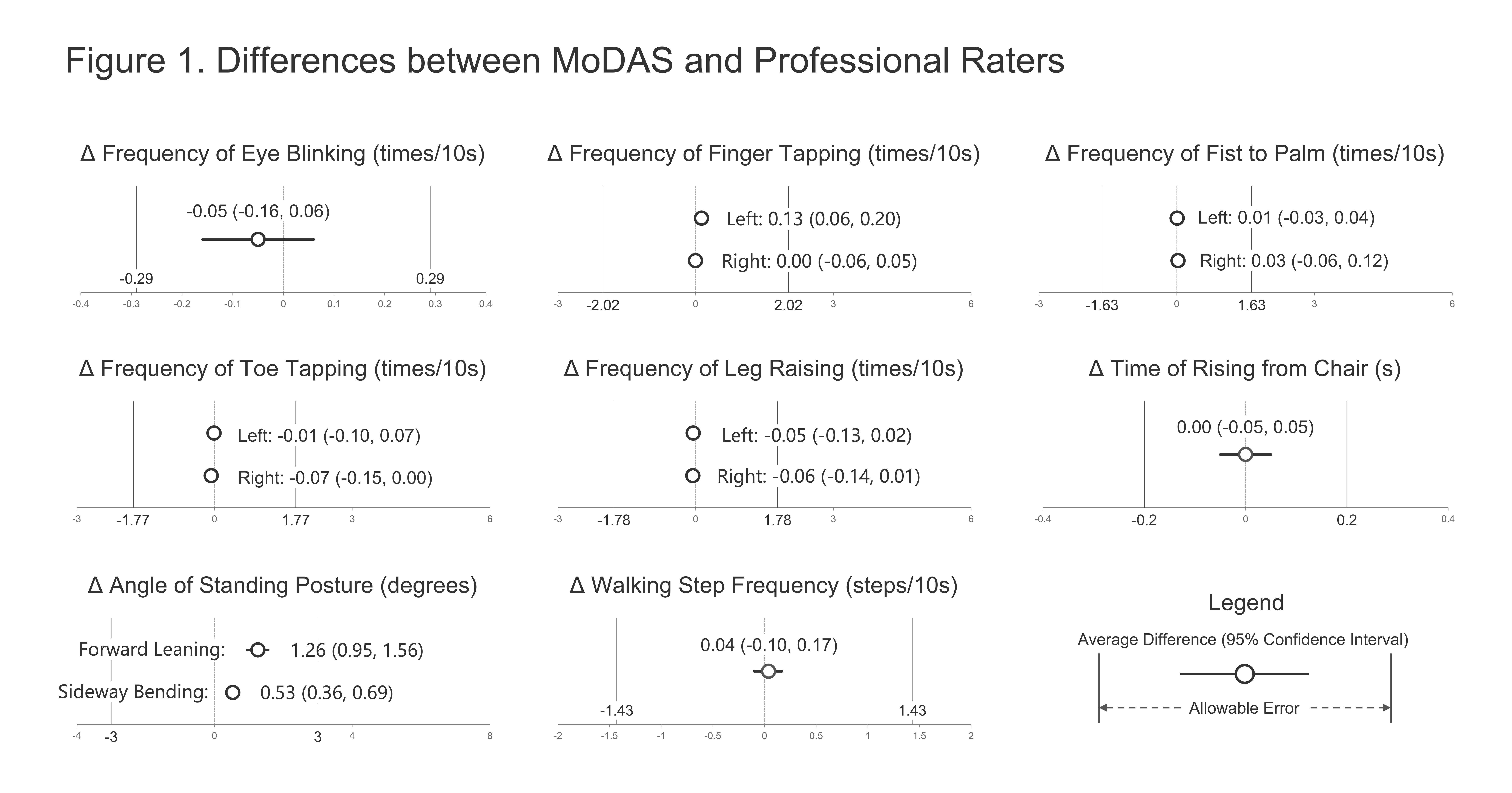Category: Parkinson’s Disease: Clinical Trials
Objective: To evaluate the consistency of objective movement variables between a computer vision-based movement dysfunction assessment software (MoDAS) and professional raters in video-based motor function assessments for PD patients.
Background: Automated tools based on sensors and videos are being developed to predict categorical scores; however, their consistency with human observers on continuous variables such as frequencies, counts, and angles remains to be confirmed.
Method: We conducted a study at 4 tertiary level hospitals. PD patients were prospectively recruited to take facial, fingers, hands, legs, feet movement videos as well as arising from chair, standing, and walking videos according to a set of standardized instructions adapted from Unified PD Rating Scale Part 3 using MoDAS. Five professional raters were randomly selected from a panel of 15 to independently evaluate the quality of videos for movement function assessment, and measure frequencies of eye blinking, finger tapping, fist to palm alteration, leg raising, toe tapping, and the time to rise from chair, the angles of forward leaning and sideway bending, and the step speed during walking. The primary assumption was that the differences of each movement variable between human raters and MoDAS were within allowable error range (10% of the estimated average values based on historical data). In sensitivity analysis, t-tests with a 0.05 threshold were employed to determine if the differences were statistically significant. This study is registered on China’s National Medical Research Registration System (MR-31-23-003816).
Results: Out of the 144 PD patients screened, 128 completed the video recording process. All videos were rated qualified by at least 4 of the 5 raters. All differences of 8 variables between MoDAS and the raters were within allowable error range. Differences in left hand finger tapping frequency, forward leaning and sideway bending angles were statistically significant, yet considered clinically not meaningful by the investigators. No adverse events were observed in this study.
Conclusion: Our study shows that movement variables generated by MoDAS are comparable to those by professional raters in video-based assessments. With digital biomarker technology, the efficiency and granularity of clinical movement assessments can be greatly improved.
References: not yet
To cite this abstract in AMA style:
WX. Wu, GJ. Jing, XX. Xu, LZZ. Li, YF. Yang, GXD. Guo. Video-Based Motor Function Assessment by Professional Raters or by Software in Patients with Parkinson’s Disease [abstract]. Mov Disord. 2023; 38 (suppl 1). https://www.mdsabstracts.org/abstract/video-based-motor-function-assessment-by-professional-raters-or-by-software-in-patients-with-parkinsons-disease/. Accessed November 8, 2025.« Back to 2023 International Congress
MDS Abstracts - https://www.mdsabstracts.org/abstract/video-based-motor-function-assessment-by-professional-raters-or-by-software-in-patients-with-parkinsons-disease/

